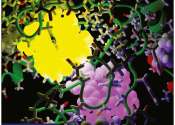The Journal of the American Chemical Society is a weekly peer-reviewed scientific journal that was established in 1879 by the American Chemical Society. The journal has absorbed two other publications in its history, the Journal of Analytical and Applied Chemistry (July 1893) and the American Chemical Journal (January 1914). It publishes original research papers in all fields of chemistry. Since 2002, the journal is edited by Peter J. Stang (University of Utah).
The Journal of the American Chemical Society is abstracted and indexed in Chemical Abstracts Service, Scopus, EBSCOhost, Thomson-Gale, ProQuest, PubMed, Web of Science, and SwetsWise. According to the Journal Citation Reports, it is the most cited journal in this field and has a 2010 impact factor of 9.023.
- Publisher
- American Chemical Society
- Country
- United States
- History
- 1879–present
- Website
- http://pubs.acs.org/journals/jacsat/index.html
- Impact factor
-
9.023
(2010)
Some content from Wikipedia,
licensed under CC BY-SA









